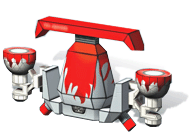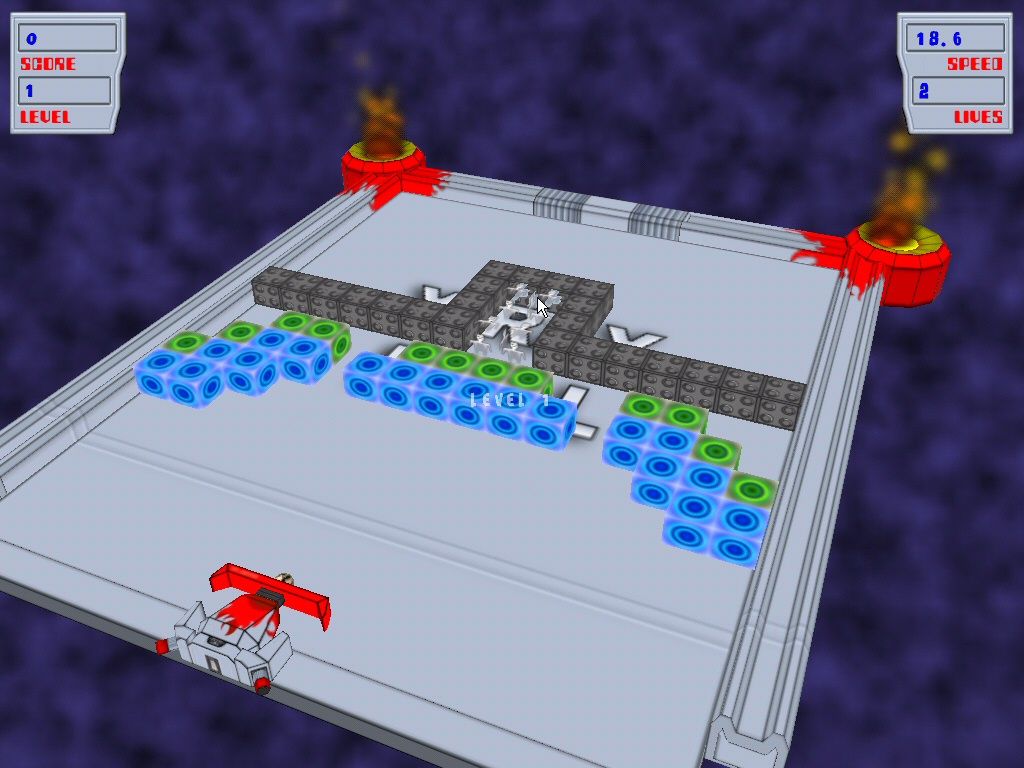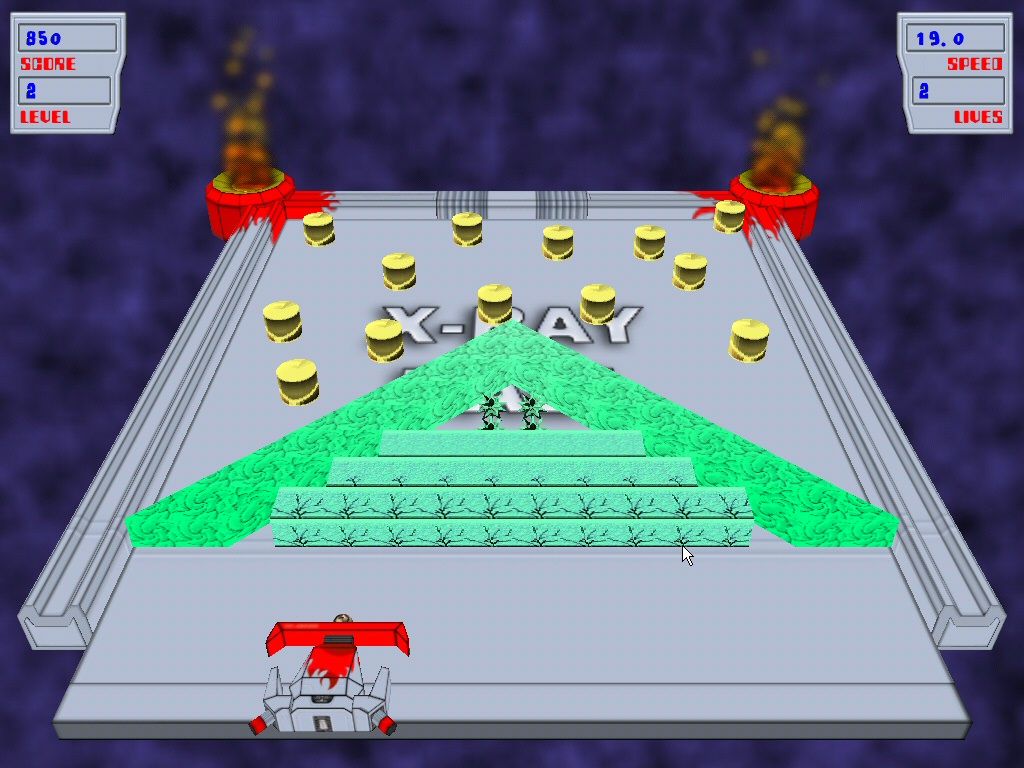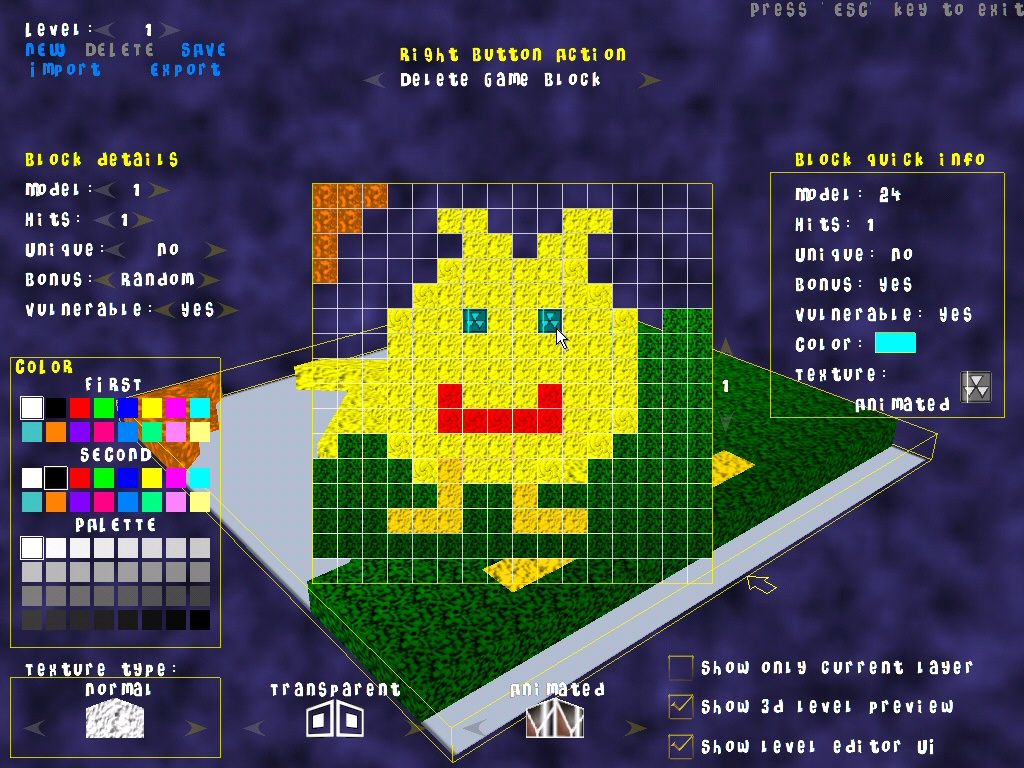Retro Replay Review
Gameplay
X-Ray Ball takes the classic Breakout formula and elevates it with three distinct modes that cater to different skill levels and playstyles. In Kid Mode and Arcade mode, players experience traditional 2D brick-busting across progressively challenging layouts. The paddle responds crisply to input, and the ball’s physics feel weighty without ever becoming sluggish. Beginners will appreciate the forgiving collision detection in Kid Mode, while seasoned players will find Arcade mode’s tighter margins and denser brick patterns a satisfying test of skill.
The real innovation appears in Ultra mode, where the action shifts into a fully 3D space. Here, layers of bricks stack above one another, and although the ball only interacts with the bottom tier, the shifting architecture keeps you on your toes. When you clear a brick that supports others, the upper bricks drop down into view, reshaping the level mid-play. This mechanic adds a strategic layer: you can target support bricks to trigger chain reactions, or methodically dismantle the structure from top to bottom.
Power-ups are at the core of X-Ray Ball’s replayability. With 31 different types—ranging from the mundane (expand/shrink paddle, slow/fast ball) to the spectacular (Ultra Ball, Rocket Launcher, Prism Gun)—each session feels fresh. The mix of seven detrimental power-ups injects an element of risk into every catch, forcing you to weigh the potential gains against the possible setbacks. Multiball and Ball Gun power-ups can quickly turn the tides, while disruptive effects like X Reverse and Z Reverse keep you alert to unexpected twists.
Adding to the gameplay’s longevity is the robust level editor, which lets creative players craft and share their own brick layouts. You can design simple 2D puzzles or experiment with multi-layered Ultra-style constructions. The editor is intuitive: place bricks, set power-up spawn points, and test your creation in real time. For community-driven fun, this feature extends the game well beyond its 100 built-in levels, ensuring there’s always something new to conquer or create.
Graphics
Visually, X-Ray Ball balances nostalgia with modern polish. The 2D modes flaunt bright, solid colors and clean edge outlines that pay homage to retro arcade displays while ensuring clarity during fast-paced sessions. Bricks glow momentarily when hit, and the ball leaves a subtle trail in high-speed scenarios, giving a pleasing sense of momentum without visual clutter.
Ultra mode’s 3D presentation steps things up with dynamic camera angles and layered depth. Bricks on different planes cast gentle shadows, helping you distinguish tiers at a glance. When a block breaks and its upper-layer cohorts descend, the animation plays smoothly, preserving immersion even when the action heats up. Occasional particle effects—explosions from power-ups, sparks from a Laser blast—add a layer of cinematic flair without dragging down performance.
The user interface is sleek yet unobtrusive. Score, remaining lives, and active power-ups sit neatly at the screen edges, leaving the playfield uncluttered. Menus and the level editor share a consistent visual language: minimalist icons, legible text, and a muted backdrop that keeps your focus on brick-busting. On modern hardware, the title runs at a solid framerate, and load times between levels or custom stages are nearly instantaneous.
Audio complements the visuals with punchy sound effects and a bouncy electronic soundtrack that ramps up in intensity as levels progress. The music loops seamlessly, and volume levels strike the right balance—lively enough to propel you forward, but not so intrusive that it overshadows the tactile thrill of each paddle strike.
Story
While X-Ray Ball doesn’t deliver a deep narrative in the traditional sense, it weaves a thematic thread through its level progression. You start in a clean, geometric arena evoking classic arcade halls, and as you advance, environments subtly shift—neon grids give way to crystalline structures, then to futuristic metalwork. Each visual theme suggests an underlying journey from retro minimalism to sci-fi grandeur.
The absence of character-driven plotlines or cutscenes is intentional, keeping the focus squarely on gameplay. This design choice pays tribute to Breakout’s legacy, where immediacy and simplicity breed addictive play. Yet, the thematic transitions between worlds provide enough variety to maintain engagement. Facing off against a wave of dark, vortex-themed bricks in later stages feels like a final gauntlet, even if there’s no villain to vanquish.
Power-up names and effects often carry playful connotations—Super Ball smashes through waves of bricks as if it’s on a mission, while the Prism Gun refracts beams with satisfying visual feedback. Though there’s no overarching storyline about saving worlds or collecting artifacts, the emergent “story” of overcoming escalating challenges creates a compelling sense of achievement.
Overall Experience
X-Ray Ball strikes a harmonious balance between familiar Breakout mechanics and inventive twists. Its three game modes cater to novices and veterans alike, and the sheer variety of power-ups keeps each play session unpredictable. The intuitive level editor extends replay value, offering a platform for both creative expression and community sharing.
Graphically, the title nods to arcade classics while embracing modern enhancements. 3D Ultra mode stands out as the game’s showpiece, but the 2D modes’ clean aesthetics and responsive controls ensure that purists feel right at home. Audio design underscores the pace without ever feeling repetitive.
Though it sidesteps a traditional narrative, X-Ray Ball crafts its own progression through thematic worlds and escalating brick formations. The thrill of chaining power-ups, clearing multiple layers in Ultra mode, or facing a screen-wide blitz of 8-Ball multiballs delivers an adrenaline rush that’s hard to replicate.
Ultimately, X-Ray Ball succeeds as a comprehensive Breakout variant that honors its roots while pushing boundaries. For players seeking a polished, content-rich brick-busting experience—whether they’re chasing high scores, building custom levels, or simply reliving arcade nostalgia—this game is a standout choice.
 Retro Replay Retro Replay gaming reviews, news, emulation, geek stuff and more!
Retro Replay Retro Replay gaming reviews, news, emulation, geek stuff and more!









Reviews
There are no reviews yet.